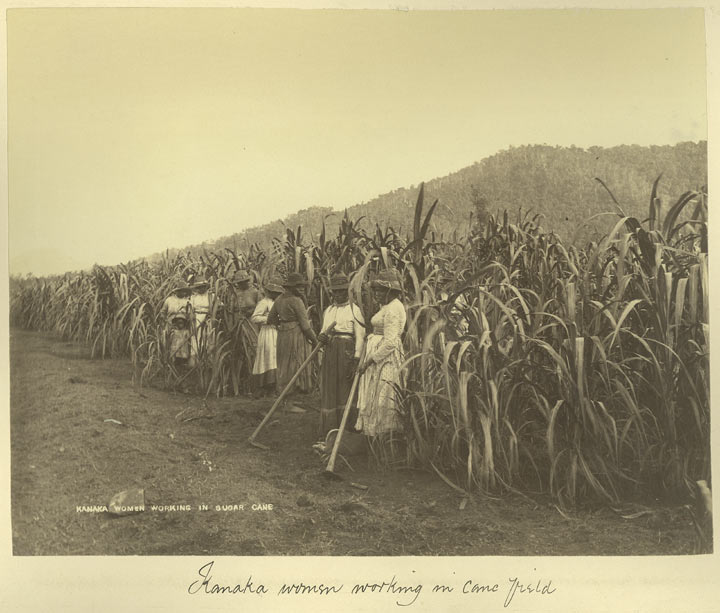 Pacific Islander women working in cane fields, c1890
Pacific Islander women working in cane fields, c1890
TLF ID R8193
This sepia photograph shows eight indentured Pacific Islander female labourers preparing to hoe weeds in rows of cane at Hambledon Mill, near Cairns in Queensland. The women and girls, some barefoot, stand at the edge of the cane, which is above head height. The foreground is bare soil and a thickly wooded hill rises in the background. There are two captions, one printed - 'KANAKA WOMEN WORKING IN SUGAR CANE' - and one handwritten - 'Kanaka women working in cane field'. The word 'Kanaka' was a derogatory term for South Pacific Islanders.
